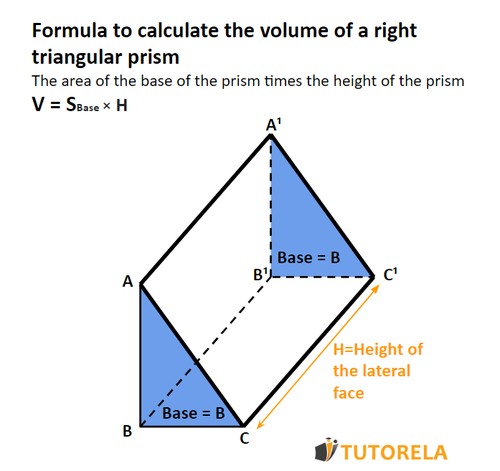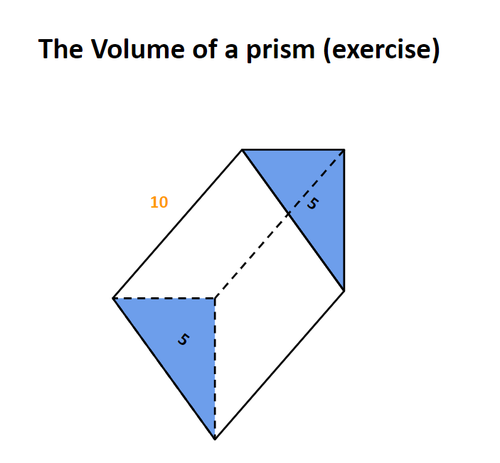The volume of a right triangular prism is actually the space bounded by the prism, that is, the space the prism "occupies" in space. The volume of the prism is calculated by multiplying the area of one of the bases of the prism (since both are equal), by the height of the prism.
The volume of the prism
Definition of the prism's volume
Volume formula of the prism
The volume of the prism is usually calculated using the following formula:

If you are interested in this article, you might be interested in the following articles:
The bases of the right triangular prism
The lateral faces of the prism
Surface area of triangular prisms
In the Tutorela blog, you will find a wide variety of mathematics articles
To better understand, let's look at a simple example. In the following drawing, there is a right triangular prism:

The area of each base of the right triangular prism is cm².
The height of the prism is cm.
The volume of the prism can be calculated by placing the data in the formula:
Therefore, the volume of the prism is cm³.
Related Subjects
- Area
- The Pythagorean Theorem
- Square
- Area of a square
- Triangle
- The Area of a Triangle
- Area of a right triangle
- Area of Isosceles Triangles
- Area of a Scalene Triangle
- Area of Equilateral Triangles
- Cylinder Surface Area
- Cylinder Volume
- Cuboids
- Cubes
- How to calculate the surface area of a rectangular prism (orthohedron)
- How to calculate the volume of a rectangular prism (orthohedron)
- Lateral surface area of a rectangular prism
- Bases of the Right Triangular Prism
- The lateral faces of the prism
- Lateral Edges of a Prism
- Height of a Prism
- Surface area of triangular prisms
- Areas of Polygons for 7th Grade
- How do we calculate the area of complex shapes?
- How to calculate the area of a triangle using trigonometry?








